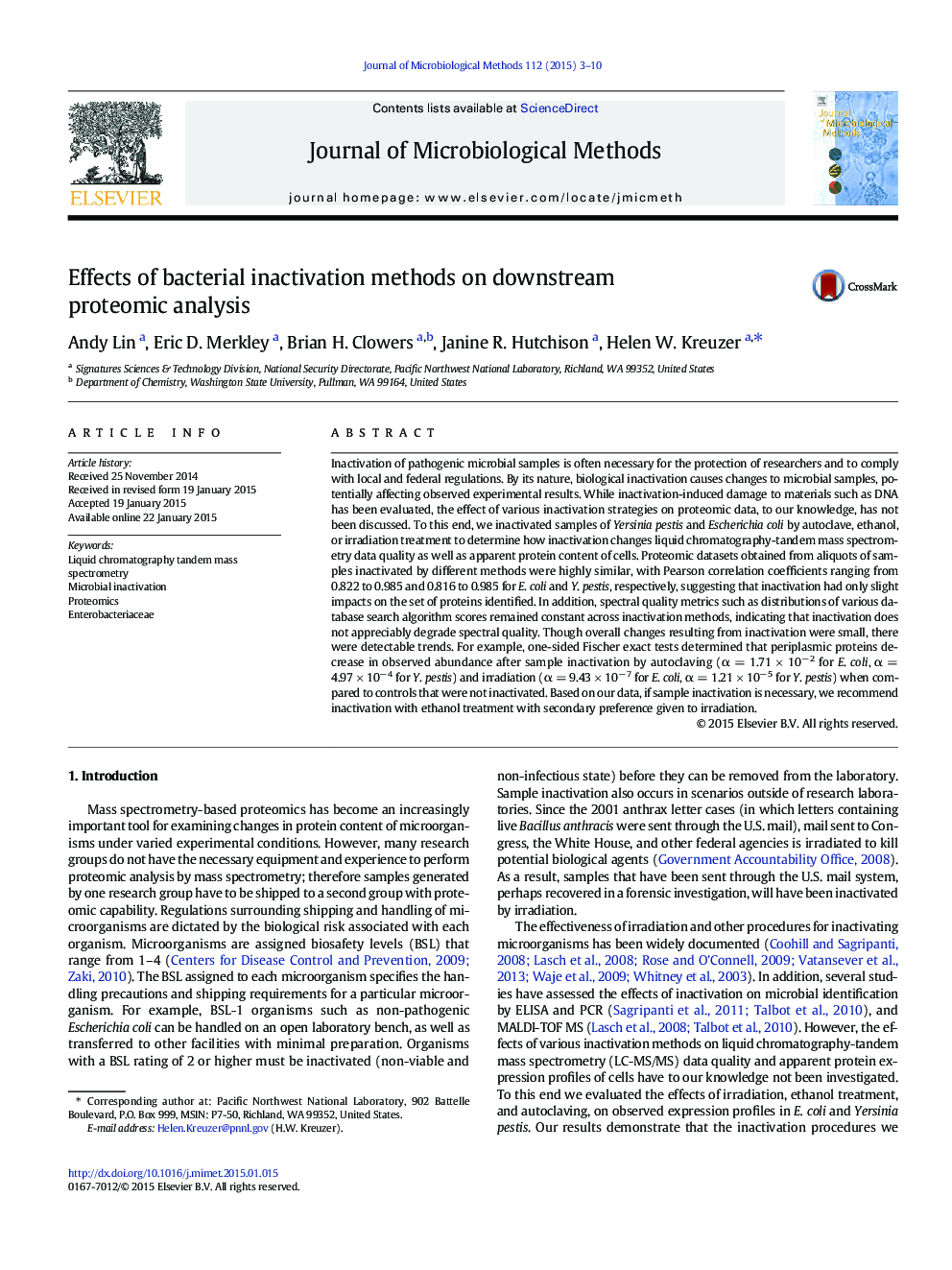| کد مقاله | کد نشریه | سال انتشار | مقاله انگلیسی | نسخه تمام متن |
|---|---|---|---|---|
| 2089784 | 1545931 | 2015 | 8 صفحه PDF | دانلود رایگان |
• Bacterial samples were inactivated by autoclaving, irradiation, and ethanol treatment.
• Proteomic data quality was largely unchanged by inactivation treatments.
• Observed protein content of cells largely unchanged after inactivation.
• Observed changes largely involved periplasmic and/or outer membrane proteins.
• Proteomes of ethanol- and irradiation-inactivated samples showed the fewest changes.
Inactivation of pathogenic microbial samples is often necessary for the protection of researchers and to comply with local and federal regulations. By its nature, biological inactivation causes changes to microbial samples, potentially affecting observed experimental results. While inactivation-induced damage to materials such as DNA has been evaluated, the effect of various inactivation strategies on proteomic data, to our knowledge, has not been discussed. To this end, we inactivated samples of Yersinia pestis and Escherichia coli by autoclave, ethanol, or irradiation treatment to determine how inactivation changes liquid chromatography-tandem mass spectrometry data quality as well as apparent protein content of cells. Proteomic datasets obtained from aliquots of samples inactivated by different methods were highly similar, with Pearson correlation coefficients ranging from 0.822 to 0.985 and 0.816 to 0.985 for E. coli and Y. pestis, respectively, suggesting that inactivation had only slight impacts on the set of proteins identified. In addition, spectral quality metrics such as distributions of various database search algorithm scores remained constant across inactivation methods, indicating that inactivation does not appreciably degrade spectral quality. Though overall changes resulting from inactivation were small, there were detectable trends. For example, one-sided Fischer exact tests determined that periplasmic proteins decrease in observed abundance after sample inactivation by autoclaving (α = 1.71 × 10− 2 for E. coli, α = 4.97 × 10− 4 for Y. pestis) and irradiation (α = 9.43 × 10− 7 for E. coli, α = 1.21 × 10− 5 for Y. pestis) when compared to controls that were not inactivated. Based on our data, if sample inactivation is necessary, we recommend inactivation with ethanol treatment with secondary preference given to irradiation.
Journal: Journal of Microbiological Methods - Volume 112, May 2015, Pages 3–10
